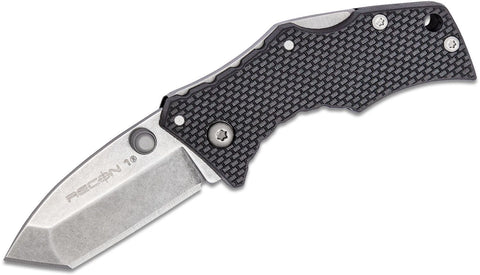Benefits and Uses of a Knife Blade with Holes - Top 5 Models in 2023
Posted by Cory McCoy on
Knife blades with holes, also known as "swedged" or "scalloped" blades, are a popular design feature on many knives. These holes, or scallops, are usually located near the blade's spine and are designed to reduce weight and improve the knife's balance.
In this article, I will first discuss why some knives have holes and I will list several popular knife models at the bottom.

Main reasons why some knife blades have holes:
-
Weight reduction - One of the primary reasons for adding holes to a knife blade is to reduce the weight of the knife. By removing material from the blade, the overall weight of the knife is reduced, which can make it easier to handle and carry.
-
Improved balance - Holes in the blade can also help to improve the balance of the knife. By removing material from the blade and redistributing it towards the handle, the balance point of the knife is shifted, which can make it feel more comfortable and easier to control.
-
Decorative touch - In addition to their functional purposes, holes in a knife blade can also add a decorative touch to the knife's appearance. Some knife makers use holes to create intricate patterns or designs on the blade, which can make the knife more visually appealing. Some people like the design of a knife blade with holes.
-
Improved cutting performance - Some knife makers claim that holes in the blade can also improve the knife's cutting performance by reducing drag and allowing for more precise cuts. However, this is a controversial claim, and the impact of holes on cutting performance is not well understood.

When selecting a knife with a blade with holes, there are a few key factors to consider. First, think about the intended use of the knife. If you will be using it for tasks like cutting, chopping, or carving, a blade with a thicker spine and a more robust design may be a good choice. On the other hand, if you will be using the knife for more precise tasks like food preparation, a blade with a finer edge may be more suitable.
Another important factor to consider is the blade material. High-quality stainless steel or carbon steel blades are often the best choice for knives with blades with holes, as they are durable and resistant to corrosion. You should also consider the handle material, as a comfortable and secure grip is essential for using a knife safely and effectively.
There are many different types of knife blades with holes, ranging from tactical and survival knives to kitchen knives and folding knives.
Top 5 Knife Models with Holes in the Blade in 2023
1. Spyderco Dragonfly
The Spyderco Dragonfly is a compact folding knife with a 2.28-inch VG-10 stainless steel blade with scalloped holes. It has a lightweight FRN (fiberglass reinforced nylon) handle and a convenient pocket clip for easy carry.
2. Kershaw Cryo
The Kershaw Cryo is a folding knife with a 3.25-inch 8Cr13MoV stainless steel blade with scalloped holes. It has a textured G-10 handle for a secure grip and a frame lock for added stability.
3. Benchmade Griptilian
The Benchmade Griptilian is a versatile folding knife with a 3.45-inch CPM-S30V stainless steel blade with scalloped holes. It has a comfortable glass-filled nylon handle and a reversible pocket clip for convenient carry.
4. Cold Steel Recon 1
The Cold Steel Recon 1 is a tactical knife with a 4-inch VG-1 stainless steel blade with scalloped holes. It has a durable G-10 handle and a Tri-Ad lock for added stability.
5. Hideaway Straight Knife
Hideaway Knives are fixed-blade tactical knives with a kydex sheath and ballchain necklace attachment. The capsule handle allows them to attach to your hand for completely hands-free use. The capsule handle comes in 28 sizes to ensure the perfect fit for everyone. The blade is made of high-quality 440c stainless steel and is hand sharpened at 19 degrees for a razor-sharp edge.
Overall, the presence of holes in a knife blade is a design feature that serves a variety of purposes, from weight reduction and improved balance to decorative touches and potentially improved cutting performance. The importance of these features will depend on the intended use of the knife blade with holes and the preferences of the user.






